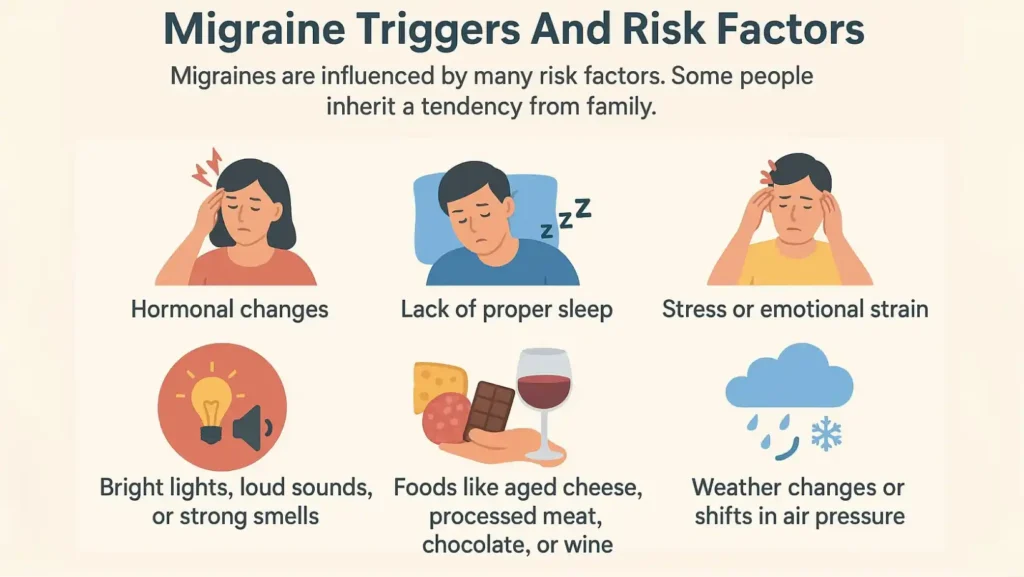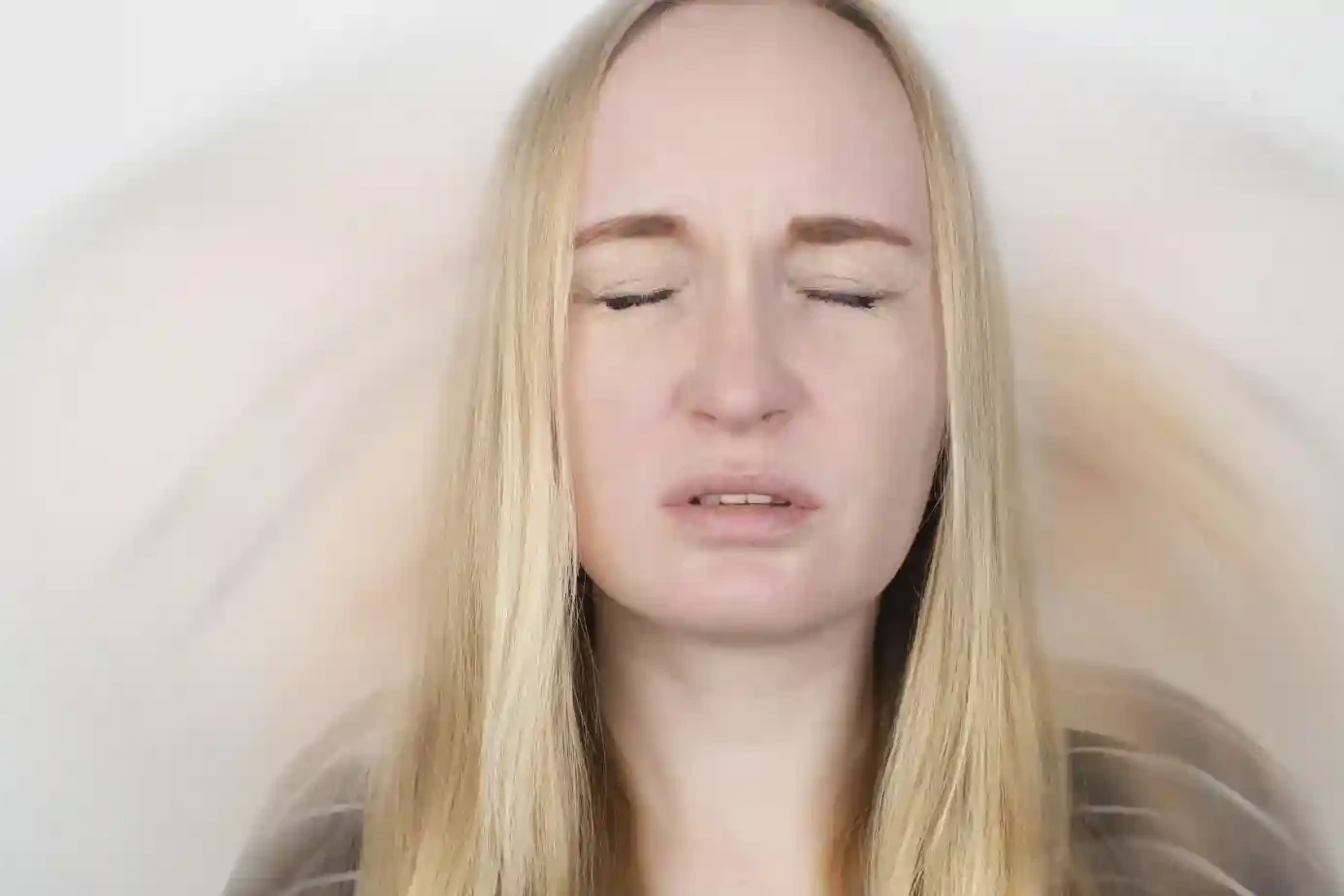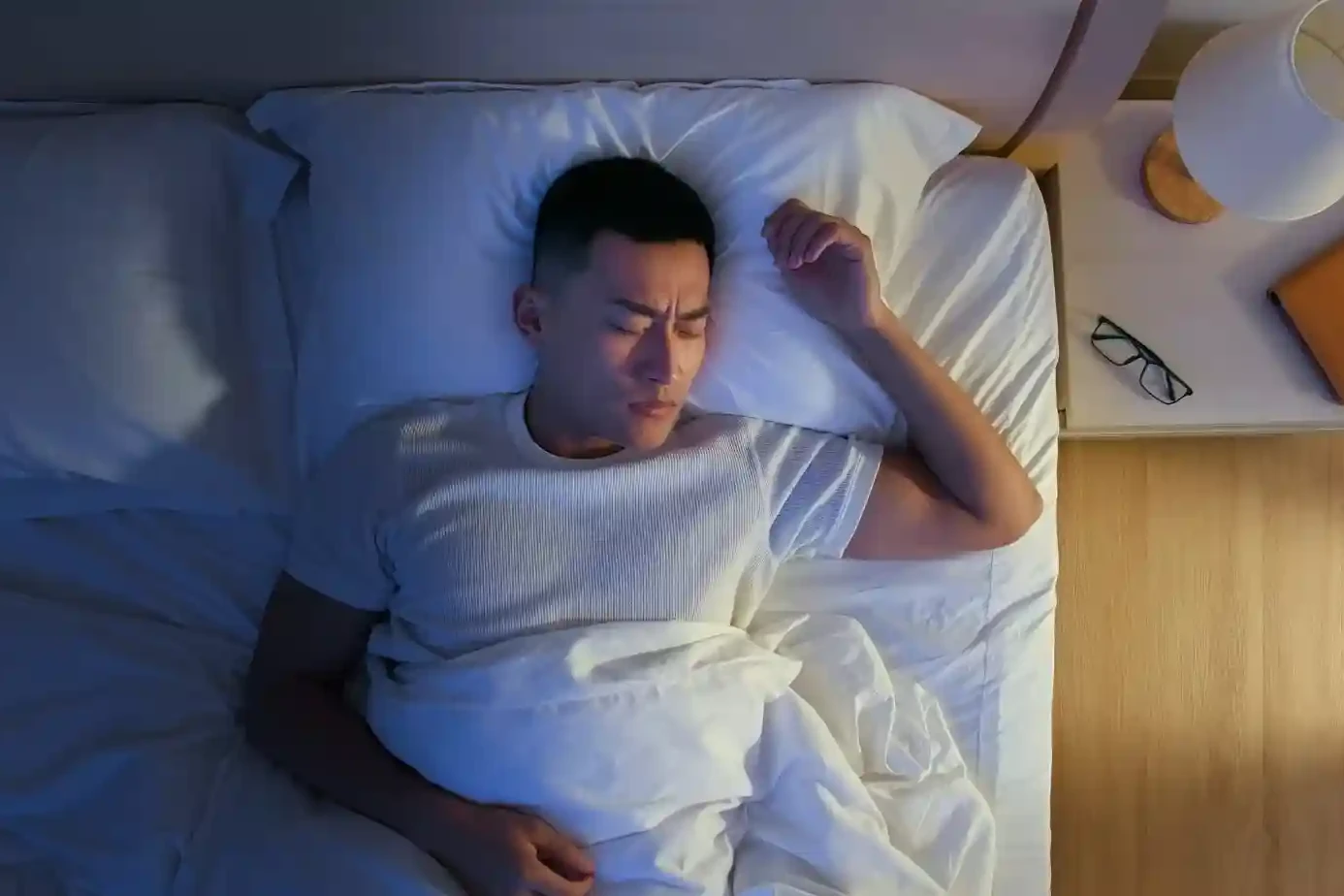The difference between migraine and headache matters more than most people think. While many people call every head pain a headache, not all head pain is the same. Some headaches are mild and fade after rest.
Others are intense and disabling, like a migraine headache. Learning how to separate one from the other helps you choose the right care, avoid wrong medicines, and know when to see a doctor.
This guide breaks down migraine vs headache, explains the main types, and shares useful treatment and prevention tips.
Table of Contents
ToggleWhat Is A Headache?
Before comparing migraine and headache, it helps to define what is headache. A headache is any pain or pressure in the head or face. It may affect one spot or the entire head. Headaches can last a few minutes or many hours.
There are common types of headaches that people often face:
- Tension-type headache
- Cluster headache
- Sinus headache
- Secondary headaches linked to health conditions
Each has different features, and knowing these helps you avoid confusion with migraine.
Cluster Headache Symptoms And Causes
A cluster headache is one of the most painful headache types. It usually causes sudden pain on one side of the head, often around or behind the eye. During a cluster headache attack, the pain may be joined by a red eye, drooping eyelid, or runny nose.
Causes are not fully known. Experts believe it may involve changes in brain activity and blood vessels. Smoking, alcohol, and daily patterns can trigger attacks. The attacks occur in “clusters” over weeks, then stop for months. Treatments may include oxygen therapy, quick-relief injections, and preventive drugs.
Sinus Headache Vs. Migraine
Many people think they have a sinus headache when they actually have a migraine. A true sinus headache is rare and usually tied to sinus infection. It feels like deep face pressure or a sinus pressure headache. There is often fever, nasal congestion, and thick mucus.
A migraine, on the other hand, may mimic sinus pressure but comes with nausea and light sensitivity. If there is no fever or thick mucus, it is likely migraine rather than sinus infection.
Secondary Headaches Explained
Secondary headaches occur as a symptom of another condition. They can be caused by head injury, medication overuse, high blood pressure, infection, or dental problems. Secondary headaches often signal something deeper. For example:
- Pain after a fall may mean concussion.
- Headache with stiff neck and fever may mean meningitis.
- Daily headaches that worsen with medication use may mean chronic daily headaches.
Secondary headaches must not be ignored because treating the root condition is the key.
Thunderclap Headache: When To Seek Emergency Care
A thunderclap headache comes suddenly, reaching full intensity in seconds. It is often described as the “worst pain of my life.” It may signal brain bleeding, stroke, or blood vessel rupture. This is a medical emergency. If you encounter a thunderclap headache, it is crucial to contact emergency services immediately.
What Is A Migraine?
Migraine is not just a headache. It is a neurological condition involving abnormal brain signals. A migraine headache is typically severe, throbbing, and often unilateral.
Migraines can last 4 to 72 hours. They often present with additional symptoms such as nausea, vomiting, and significant sensitivity to light or sound. Some people experience aura symptoms before pain begins. Aura may present as flashing lights, zigzag patterns, blind spots, or tingling sensations in the hands and face.
Migraine attacks affect daily life much more than ordinary headaches.
Migraine Vs Headache: Key Differences
Here is a clear comparison table showing migraine vs headache differences:
| Feature | Regular Headache | Migraine |
| Pain type | Dull, steady pressure | Pulsing, throbbing headache |
| Location | Both sides of head | Often unilateral headache (one side) |
| Intensity | Mild to moderate | Moderate to severe |
| Duration | Minutes to hours | Hours to days |
| Other signs | Rare | Nausea, vomiting, aura symptoms, light and sound sensitivity |
| Triggers | Stress, lack of sleep, dehydration | Hormones, foods, stress, weather, sleep changes, headache triggers |
This table shows why knowing the difference between migraine and headache matters.
Migraine Triggers And Risk Factors

Migraines are influenced by many risk factors. Some people inherit a tendency from family. Common migraine headache causes include:
- Hormonal changes, especially in women during periods or pregnancy
- Lack of proper sleep or irregular sleep
- Stress or emotional strain
- Bright lights, loud sounds, or strong smells
- Foods like aged cheese, processed meat, chocolate, or wine
- Skipping meals or fasting
- Weather changes or shifts in air pressure
Keeping a diary can help identify personal triggers. Avoiding these triggers reduces attack frequency.
Migraine Pain Location And Symptoms
Migraine pain usually starts on one side of the head but can spread. It feels pulsing or throbbing. Common symptoms include:
- Nausea and vomiting
- Sensitivity to light, noise, or smell
- Aura symptoms such as vision changes, flashing lights, or zigzag lines
- Tingling in hands or face
- Trouble speaking in some cases
These neurological symptoms of migraine make it different from ordinary headaches.
Migraine Vs Headache: How Sleep Plays A Role
Sleep is strongly linked with both migraine and other headaches. Poor sleep can trigger attacks. Too much or too little sleep often increases risk.
Migraine And Sleep Disturbances
Migraines are often linked to poor-quality sleep. Waking up frequently at night or irregular sleep patterns can trigger morning migraines. Improving sleep hygiene can reduce attacks.
Headaches Linked To Poor Sleep
Tension-type headaches are often worsened by poor sleep. They feel like a tight band around their head. People with insomnia often report more stress headache episodes. Improving rest can cut down these headaches.
Migraine And Headache Treatment Options
The right treatment depends on the type of headache. Understanding whether you are experiencing a migraine or another headache type can help save time and alleviate suffering.
Headache Treatment And Home Remedies
For mild headaches, simple steps often help:
- Rest in a quiet room
- Drink water
- Place a cool cloth on the forehead
- Stretch neck and shoulder muscles
- Take safe over-the-counter pain relievers as directed
Overuse of pain relievers can cause chronic daily headaches, so avoid excess use.
Migraine Treatment And Migraine Medication
Migraine treatment requires a more targeted approach. Medicines include:
- Triptans for quick relief
- Anti-nausea drugs
- Pain relievers when taken early
- Migraine medication for prevention, like beta blockers or anti-seizure drugs
- Preventive migraine medication if attacks are frequent
Lifestyle changes also help: regular sleep, balanced meals, stress control, and exercise.
Doctors also compare headache relief vs migraine treatment, since migraine often needs specific drugs rather than simple painkillers.
Prevention Tips For Migraine And Other Headaches
You can lower your risk of migraines and headaches with some simple daily habits:
- Keep regular sleep and wake times
- Drink enough water every day
- Eat balanced meals without skipping
- Exercise regularly
- Avoid strong triggers like alcohol, smoke, or strong perfumes
- Practice stress control methods such as deep breathing, short walks, or meditation
Preventing attacks is always better than trying to fix them after they start.
FAQs
How do I know if it’s a migraine or just a headache?
Migraine usually lasts longer, causes pulsing one-sided pain, and comes with nausea or sensitivity. A simple headache often feels like dull pressure and passes more quickly.
What are the 5 C’s of migraines?
The “5 C’s” include common food triggers: cheese, chocolate, caffeine, citrus, and cured meats. These may not affect everyone but often appear in people’s migraine diaries.
How do you treat migraines while pregnant?
Pregnant women should avoid strong medicines unless prescribed. Acetaminophen is usually safe. Rest, hydration, and non-drug remedies are preferred for migraine treatment during pregnancy.
How do you flush out a migraine?
There is no instant flush for migraine. Relief often comes from rest in a dark quiet room, hydration, cold compress, and taking prescribed migraine medication if safe.
What are the warning signs of a migraine?
Warning signs may include vision changes, tingling, mood changes, or food cravings. These signs appear hours before pain starts and are known as aura symptoms.
Are migraines a brain issue?
Yes, migraine is considered a neurological condition. It involves abnormal brain activity, nerve pathways, and chemical changes. This is why symptoms include more than just pain.
Does drinking water help migraines?
Yes, dehydration is a known trigger. Drinking enough water daily reduces the chance of migraine attacks and also helps ease other common types of headaches
About The Author

This article is medically reviewed by Dr. Chandril Chugh, Board-Certified Neurologist, providing expert insights and reliable health information.
Dr. Chandril Chugh is a U.S.-trained neurologist with over a decade of experience. Known for his compassionate care, he specializes in treating neurological conditions such as migraines, epilepsy, and Parkinson’s disease. Dr. Chugh is highly regarded for his patient-centered approach and dedication to providing personalized care.
→ Book a consultation to discover which remedies suit your needs best.





